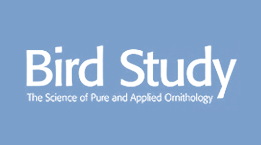Home ranges and movements of Egyptian Vultures Neophron percnopterus in relation to rubbish dumps in Oman and the Horn of Africa
Capsule: Non-breeding Egyptian Vultures Neophron percnopterus tracked in Oman and the Horn of Africa ranged over large areas and made regular use of anthropogenic sources of food. Tracking data provide evidence that vultures monitor the availability of food within their home ranges.
Aims: To study home range and movement patterns of non-breeding Egyptian Vultures.
Methods: Five non-breeding Egyptian Vultures were tracked using Global Positioning System technology. Home range sizes were estimated using data only from vultures tracked for more than 11 months, and movements described. Analyses sought to determine whether patterns in movement were related to the location of rubbish dump sites and landfills.
Results: Home range sizes of non-breeding Egyptian Vultures (95% kernel density estimator), ranged from 4238 to 7323 km2. The average 3-hourly step length ranged from 3106.51 ± 173.16 m (mean ± se; median: 143.72 m; interquartile range, IQR: 2237.41 m) to 6519.46 ± 224.93 m (median: 2131.40 m; IQR: 7098.73 m). Egyptian Vulture activities centred on a few large rubbish dump sites that likely provided perpetually abundant food, but they frequently left those sites and visited other dumps.
Conclusions: In line with what is known about Egyptian Vulture ecology, tracked birds ranged over large areas and made use of anthropogenic sources of food. Given the perpetual abundance of food at large rubbish dumps and in the presence of other scavengers feeding at them, there seemed little motivation for Egyptian Vultures to move away from them, unless it was to monitor food resources at other places within their home ranges. This movement behaviour likely reflects the potential benefit to vultures of knowledge about food availability in the wider environment, despite food being abundant at the site at which they are currently located.


